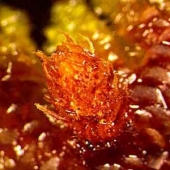.jpg)
Please select root levels for the menu
NZ Plants
Thallose liverworts 1: Antheridia and archegonia on the surface of the thallus
In some thallose liverworts egg-containing archegonia and sperm-containing antheridia are formed on the surface of the thallus. After the egg is fertilised the embryo sporophyte remains attached to the the thallus which nourishes it. The embryo forms a small capsule which, when mature, is rapidly elevated above the thallus by a seta (stalk).
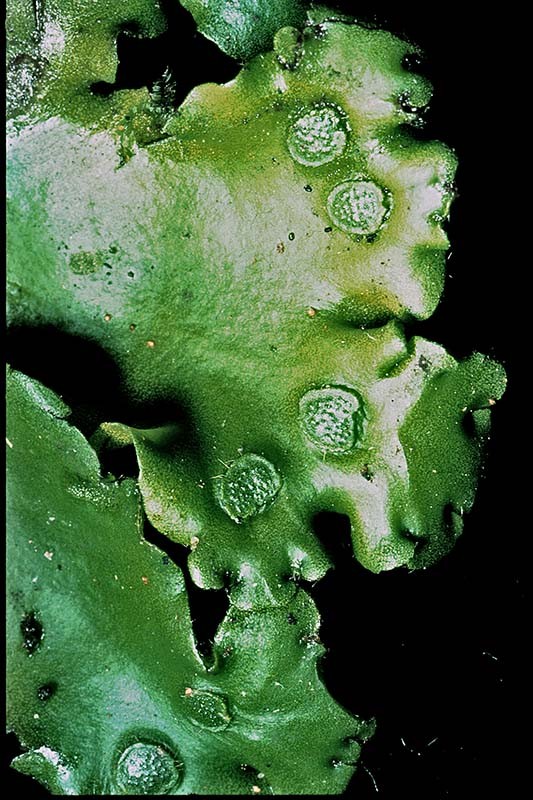
Monoclea forsteri - A male thallus forms sperm within circular regions which are splashed into the air by falling rain drops. If a sperm-containing drop lands on a female plant, the sperm will achieve fertilisation by swimming into grooves that contain the eggs
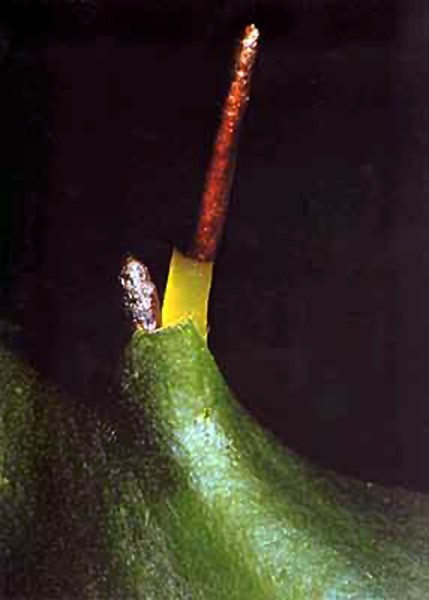
Monoclea forsteri - When the spores are mature, cells below the capsule rapidly elongate to form a seta. This pushes the mature capsule out of the archegonium and above the surface of the thallus
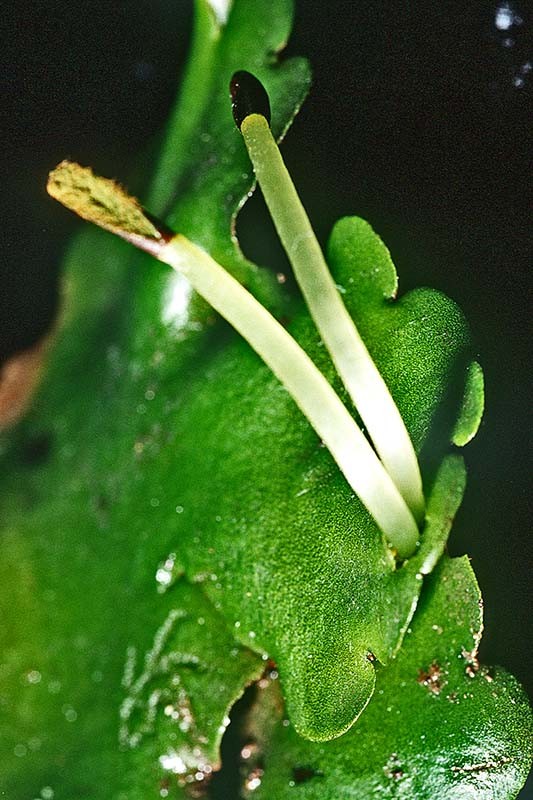
Monoclea forsteri - Once the capsule is high above the thallus it splits open to release spores (capsule on the left).
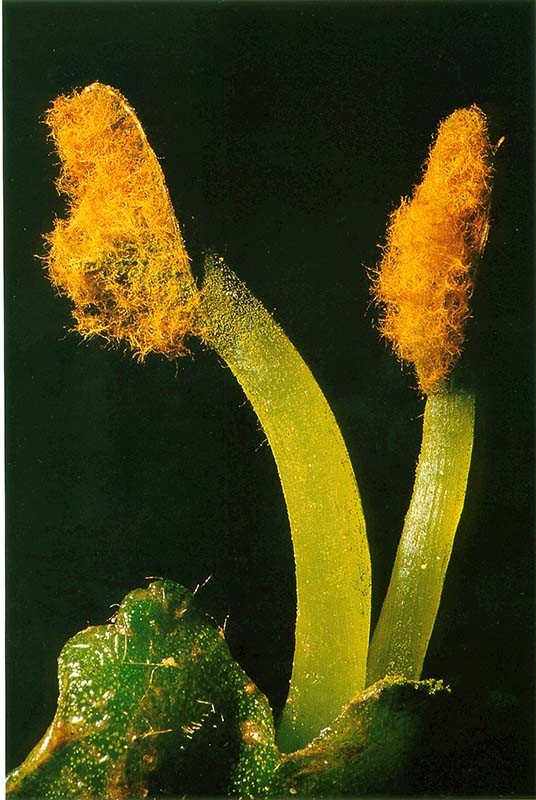
Monoclea forsteri - Capsules split along a single seam releasing spores.
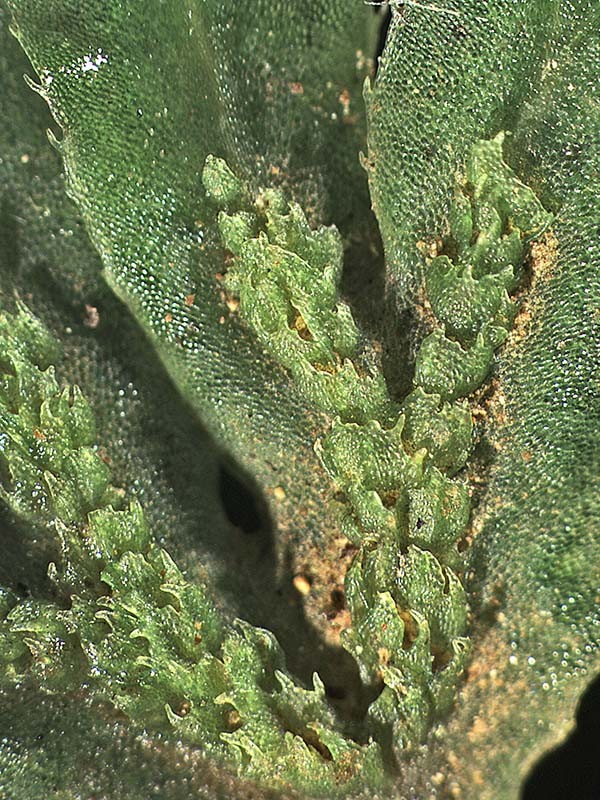
Symphyogyna hymenophyllum - Male plants have antheridia arranged in rows along the sides of the mid-ribs, each covered by a small scale. (photo, Larry Jensen)
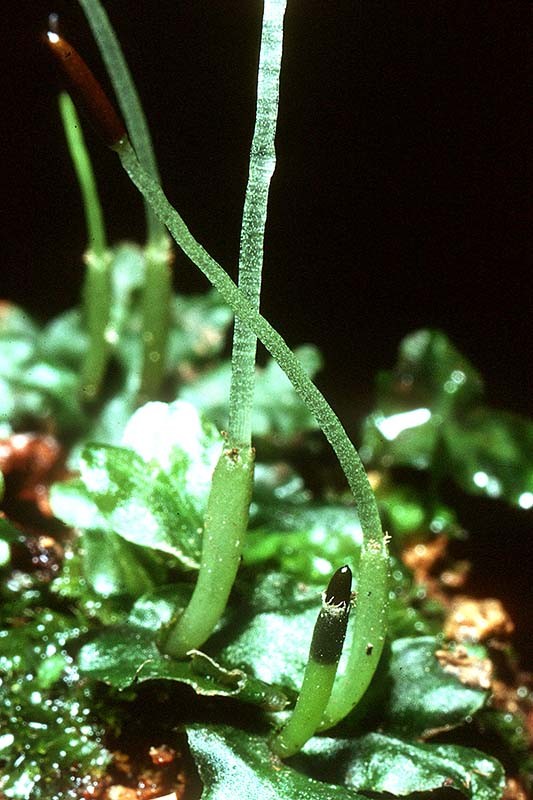
Symphyogyna hymenophyllum - When mature, a capsule is quickly elevated above the thallus by rapid growth of the seta.
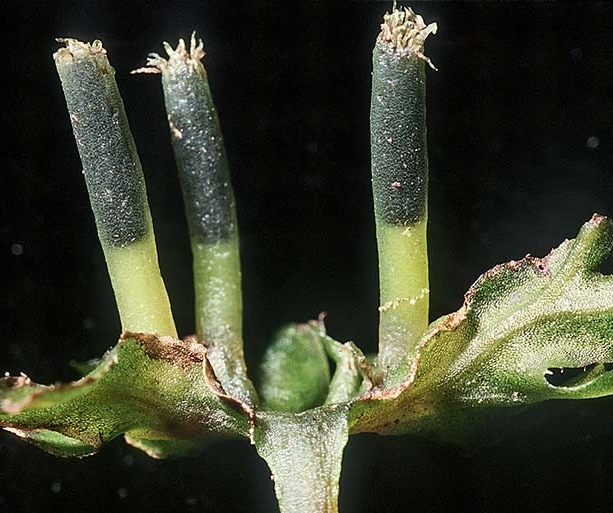
Symphyogyna hymenophyllum - The female plants form archegonia in a depression at the fork of the mid-rib. After fertilisation a thin pseudoperianth (cylindrical collar) forms around the embryo. In the photo a capsule (darkened upper portion) and short seta (green stalk below the capsule) can be seen inside each transparent pseudoperianth.

